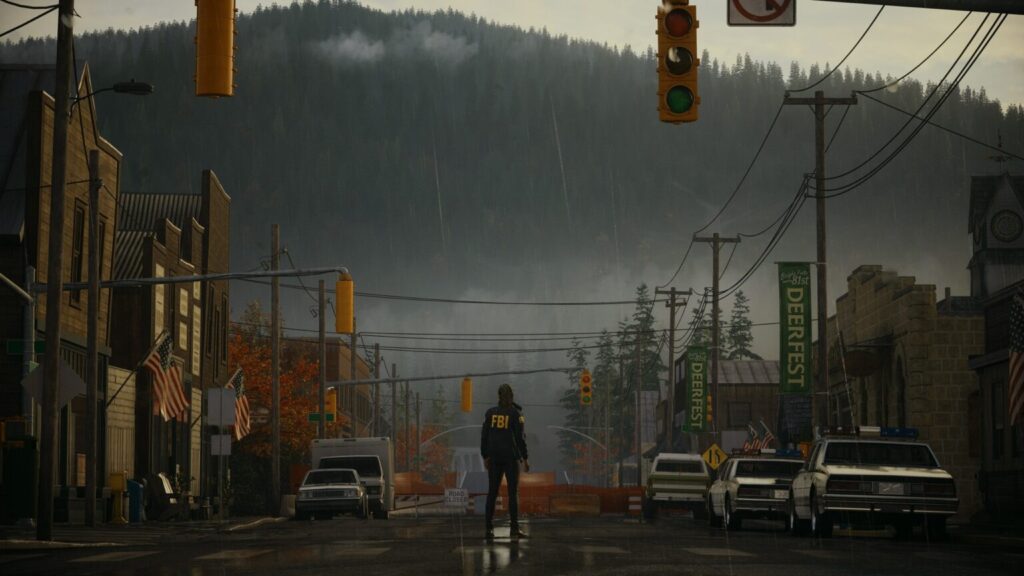
There’s an as-yet-unnamed subgenre of video games that’s analogous to arthouse cinema. Philosophical in theme, non-linear in its storytelling, and visually experimental, Alan Wake 2 is now surely one of the exemplars of this category, taking its place among the other usual suspects – Silent Hill 2, The Stanley Parable, Deus Ex, etc.
Being the cultured and refined gamer that I am (read: pretentious and insufferable), I knew I had to play it. Ultimately, I was impressed. This is a game that respects the player’s intelligence. There is a sharp directorial vision that makes no concessions to didactically spelling out its central message. Everything in the game, from the brilliantly executed visual design to the not-so-brilliantly executed ambiguous ending, is constructed to maintain an pervasive sense of disorientation and unease. If you’ve watched a David Lynch film, you know this feeling. This isn’t accidental: auteurist director Sam Lake has professed Lynch as the main inspiration for his work.
And for me, that’s kind of the problem with Alan Wake 2: it draws so much from the language of film that one begins to wonder why it bothers being a video game in the first place. The most obvious example, of course, are the live-action cinematics. Frequent, highly stylized and well-acted, these break up the gameplay and also interrupt it through the use of cutaway jump scares. The cinematography here is bold and excellent – as the player-character, you’ll find yourself walking through scenes that wouldn’t be out of place in a high-budget HBO show. The influence of film, too, is evident in the game’s motifs: you’re on a talk-show, televisions are often interactable objects, there’s a level in a cinema, two of the characters are filmmakers, et cetera.
There’s nothing inherently wrong with making cinematic games, of course. Some of the most acclaimed games of the last fifteen years, such as Red Dead Redemption 2 and The Last of Us, resonate because they use a filmic style that feels immediately recognizable and comfortable for the player.
In Alan Wake 2, though, the devotion to cinema clashes directly with the gameplay. This is not just because the combat and movement are clunky or frustrating (though that certainly doesn’t help). It’s also that the gameplay elements designed to forward the story are so banal they feel anti-immersive. For example, the plot-switching mechanic in Wake’s sections has the potential to use the unique interactivity of gaming to advance and deepen the story. But in practice, it amounts to little more than clicking through each option until you find the right one.
Similarly, Saga’s case board could have acted as an excellent mechanism through which to get at her thought process on a deeper level, as John’s diary is in RDR2 – but ends up being a simple event log, no more than a pace-killing chore when you’re occasionally forced to update it. Further, the ability to switch between the two characters’ storylines is a nice touch that utilizes the non-linear potential of video games, but in practice doesn’t do a great deal to deepen the story in any meaningful sense.
Eventually it started to feel like Alan Wake 2’s gameplay got in the way of the story. I was simply walking between cinematic cutscenes, killing a few irritating bad guys and solving some cookie-cutter puzzles along the way. It is ironic, I feel, that a game that primarily explores the interrelations between mediums, and between medium and reality, is completely lacklustre in its attempts to merge its gameplay with its cinematic elements.
Ultimately, Alan Wake II proves that video games can rival the visual and narrative quality of prestige TV – but by overlooking the uniquely storytelling potential of interactivity, you start to question whether it needed to be a video game at all.
